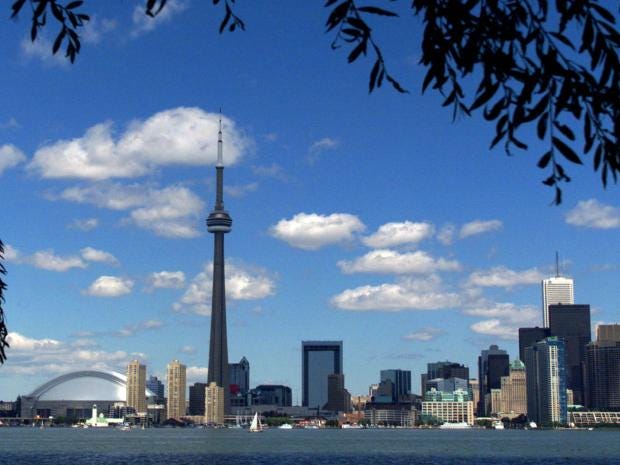The 19 countries with the highest level of government debt
|
|
|
|

We are now living in a world where interest rates are super-low, even negative in some cases, across some of the richest nations.
This means it is cheaper for people and governments to service their debts while also promoting spending.
The World Economic Forum's Global Competitiveness Surveylooks at the financial health and risks of countries around the world.
One of the most interesting and important rankings is actually the level of government debt.
By looking at level of gross government debt as a percentage of GDP, it can indicate how able a country is to pay back debts without incurring further debt. Basically, the lower the debt-to-GDP ratio the better.
Take a look to see who made the top 19:
19. Canada — 91.5%. While Canada is behind the US in the overall competitive country ranking by WEF, it has a lower debt to GDP ratio while the US "lags behind Canada in the quality of institutions, macroeconomic environment, and health and primary education."
18. Gambia — 91.6%. WEF points out that the West African country does not just suffer from high levels of government debt versus its GDP, access to financing and onerous foreign currency regulations make doing business in the country difficult.
17. Jordan — 91.7%. WEF says "addressing macroeconomic challenges will be key to freeing up public funding for competitiveness-enhancing investment" as it geopolitically suffers from being close to Syria and Iraq.
16. Ireland – 95.2%. The country has reduced its GDP to debt ratio from 122.8% last year, as it continues its success in refinancing a large amount of banking-related debt.

(AFP)
15. France – 96.8%. France's government debt to GDP ratio has widened this year as it struggles with weak productivity and wages.
14. Singapore — 98.2%. The country is one of the richest in the world and it has managed to reduce its GDP to debt ratio from 103.8% last year. Meanwhile, the government is now trying to find new ways to grow the economy and raise productivity.
13. Spain — 99%. Spain, like many eurozone countries, is trying to raise productivity across the country to boost its economy.
12. Barbados — 103%. The tax-haven nation is the wealthiest and most developed country in the eastern Caribbean, but its growth prospects look weak due to austerity measures to combat the effects of the credit crisis eight years ago.
11. United States — 105.8%. It will be all change over the next few months when US President Barack Obama leaves office and either Hillary Clinton or Donald Trump takes over. The Federal Reserve is also tipped to be on the cusp of raising interest rates soon.

(Getty Images)
10. Belgium — 106.3%. The country is home some of the most powerful people in the world, thanks to Brussels, but the nation suffers from high government debt levels as it battles with restrictive labour and tax regulations, says WEF.
9. Cyprus — 108.7%. The country has managed to reduce its GDP to debt ratio from 112% last year, as it continues to repair itself following its excessive exposure to Greece.
8. Bhutan — 115.7%. The small Asian economy is closely linked to India and depends heavily on it for financial assistance and foreign labourers for infrastructure.
7. Cape Verde — 119.3%. The island nation is a service-orientated economy and suffers from a poor natural-resource base. This means it has to import 82% of its food, leading to vulnerability to market fluctuations.
6. Jamaica — 124.3%. The services industry accounts for 80% of GDP, but high crime, corruption, and large-scale unemployment drag the country's growth down.

(Bruce Bennett/Getty Images)
5. Portugal — 128.8%. Portugal exited its own bailout programme in the middle of 2014, and it is still trying to economically recurperate.
4. Italy — 132.6%. The country's proportion of debt to GDP is the second highest in the Eurozone. Italy is also at one of its most crucial crossroads in recent history as the nation goes to vote on constitutional reforms soon.
3. Lebanon — 139.1%. The country used to be a tourist destination, but war in Syria and domestic political turmoil have caused ructions across the economy.
2. Greece — 178.4%. The country is continuing to suffer since the sovereign debt crisis of 2010. It is still struggling to make debt repayments after being bailed out continually by international creditors and is still in full force of a stringent austerity drive.
1. Japan — 248.1%. The country's debt to GDP ratio is enormous. The country is in a troubling spot. Its economy is growing very slowly and now the central bank has implemented negative interest rates.
Read more:

• This chart is easy to interpret: It says we're screwed
• How Uber became the world's most valuable startup
• These 4 things could trigger the next crisis in Europe
• How Uber became the world's most valuable startup
• These 4 things could trigger the next crisis in Europe
Read the original article on Business Insider UK. © 2016. Follow Business Insider UK on Twitter.
- More about:
- Government
- Debt





No comments:
Post a Comment